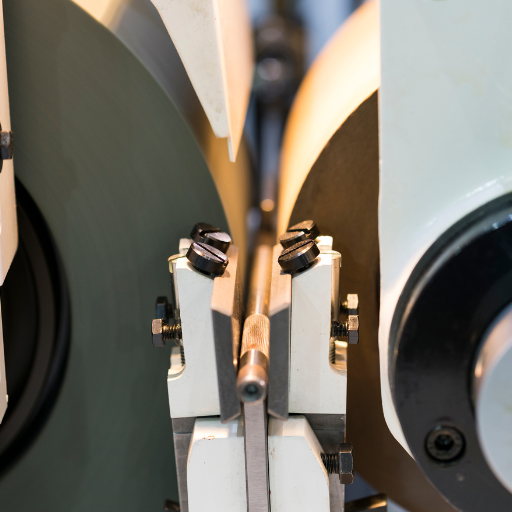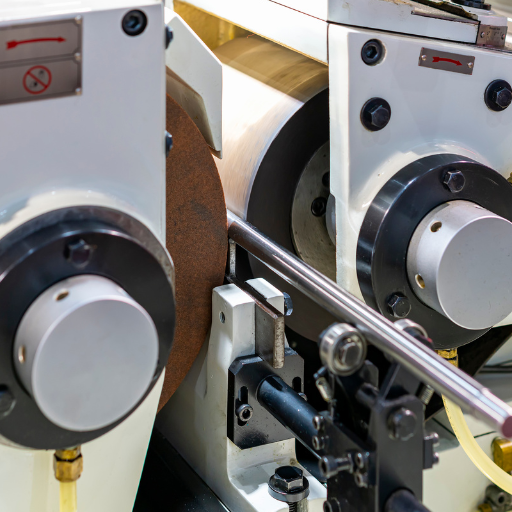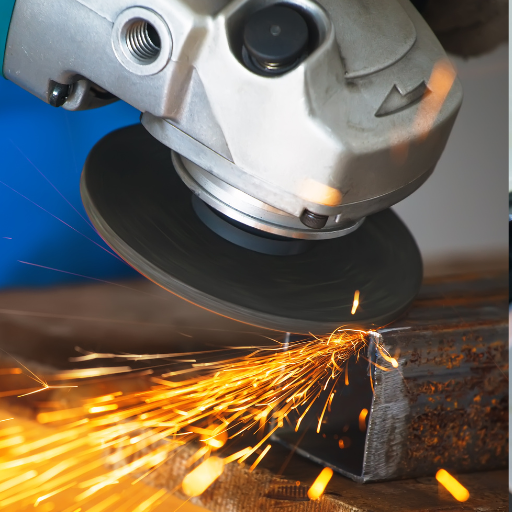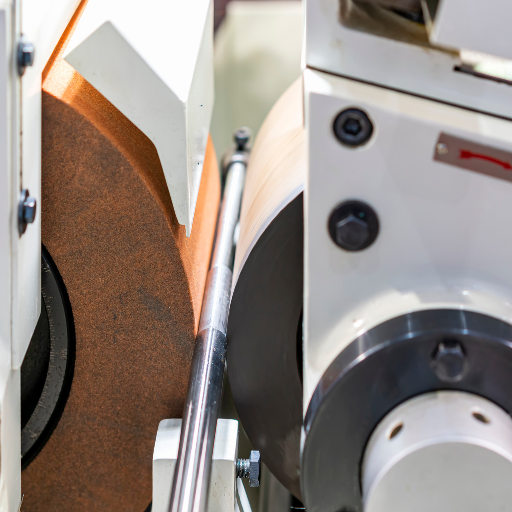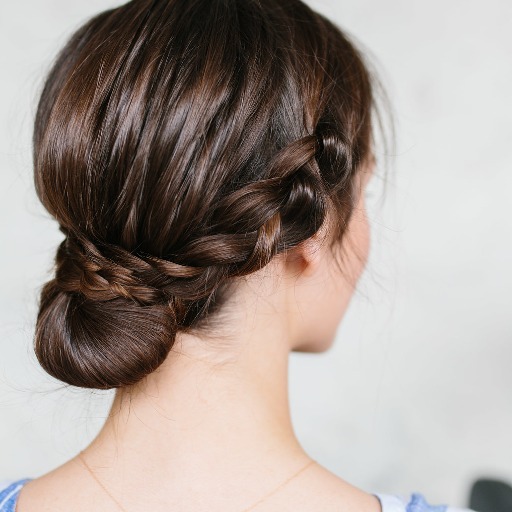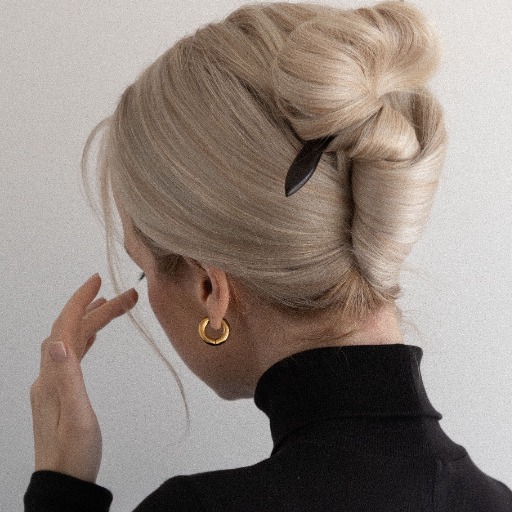We welcome you to our complete guide where we shall be discussing advanced center-less grinding machines and their precision grinding technology. The importance of the role played by centreless grinders in generating components that are perfectly round and smooth with outstanding precision cannot be overemphasized; this is because they form part of the majority of high-precision manufacturing processes. In this blog, we will go into how modern center-less grinding equipment work, what their operations are based on and how they enhance efficiency and product quality. For those who are novices or for those who wish to learn more about its flexible machining process, this write up will enlighten you with important tips as well as experience on this topic.
What is Centerless Grinding and How Does it Differ?
Centerless grinding is a machining process that uses abrasive cutting to remove material from a workpiece, in contrast with traditional cylindrical grinding where the workpiece is held between two centers and centerless grinding eliminates need for these fixtures. Moreover, the blade holds the object while it is regulated by a rotating regulating wheel and a high-speed grinding wheel. This makes it faster to undertake and also allows for continuous feeding of the work piece so as to improve overall efficiency. Differentiating centerless grinding from other types of grinding include processing rate is swifter; better at fabricating smaller components which are more complex; and can do either through-feed or in-feed operations. As such, centerless grinders are perfect for high-volume production environments because they boost productivity significantly and allow very tight tolerances.
Exploring Centerless Grinding Basics
The basic premise behind centerless grinding is simple: no mechanical device forms part of this process, rather the workpiece rests on a work rest blade and rotates under the control of a regulating wheel. In addition, such an approach facilitates quick set-up times leading to improved production rates. There are several important steps in this process:
- Work Rest Blade: This blade serves as support during grinding operation.
- Regulating Wheel: The slower-rotating wheel controls rotation speed as well as axial movement.
- Grinding Wheel: It removes material from the workpiece’s surface at high speeds to achieve desired dimensions/finishes.
There are two main types of center less grinding namely:
- Through-feed Grinding: Long, slender parts can be made using this method whereby the ground wheels move continuously along them.
- In-feed Grinding: Parts having complex geometries require positioning them axially into machines for their own processing purposes.
Benefits associated with centre less grinders include rapidity when compared to normal grinders thereby enhancing productivity as well as accuracy resulting into narrower tolerance bands (Miltenburg 2017). Hence, centerless grinding is very useful in mass production of small, intricate components.
Centerless Grinding Versus Traditional Grinding Distinctions
Workpiece Support and Stabilization:
Centerless Grinding: No fixture has been used to support the workpiece. The work piece rests on a blade put in place for this purpose and rotates with the help of a regulating wheel.
Traditional Grinding: Involves use of fixtures to stabilize the work object which may limit their flexibility when working on diverse shapes.
- Presence of a Fixture:
- Centerless Grinding: Work rest blade supports the workpiece as it rotates under control of regulating wheel without requiring additional fixturing.
- Traditional Grinding: This type requires longer setup times due to extra fixtures that hold down the objects.
- Speed and Efficiency:
- Centerless Grinding: The absence of fixture setup helps increase efficiency thereby resulting into high-volume runs that can be processed quickly. For instance, cycle time for an automotive application may be less than 10 seconds per part (Badger et al., 2006).
- Traditional Grinding: Such operations typically require elaborate adjustments leading to long set up and processing times (Fricker et al., 2014).
- Precision and Tolerance:
- Centerless Grinding: Can achieve extremely tight tolerances often within ±2.5 microns making them suitable for aerospace or medical devices where high precision is required (Oberg et.al., 2013)
- Traditional Grinding: It usually delivers tolerances around ±10 microns which are ideal for less demanding applications but not high-precision requirements (Fricker et al., 2014).
- Material Removal Rate (MRR):
- Centerless grinding: This has a higher productivity as there is greater material removal rate due to continuous feed and higher rotational speed. Studies show MRR can be up to 30% higher compared to traditional grinding methods.Traditional Grinding: Slower MRR due to the limitations imposed by fixture constraints and slower rotation speeds.
- Surface Finish:
- Centerless grinding machines frequently produce superior surface finishes (Ra values below 0.1 microns) because of continuous rotational support and sustained abrasive interaction.
- Traditional Grinding: Surface finish quality might be lower (Ra values around 0.2-0.4 microns) depending on fixture setup and machine wear.
- Versatility:
- By allowing simultaneous outer and inner diameter grinding of complex geometries, centerless grinders are highly versatile, facilitating the production of multiple part geometries with minimal setup changes.
- Traditional Grinding: Typically best suited for more straightforward operations, such as simple cylindrical shapes, requiring extensive setup modifications to handle complex parts.
Manufacturers need to understand these differences clearly and know how exactly they relate between centerless grinding and traditional approach so that they can make informed decision on which one to go for depending on their specific needs or operational goals.
Understanding the Centerless Grinding Machine Setup
A number of key components must be properly aligned in a centerless grinding machine setup in order for it to function at peak performance. Here’s a breakdown of the key elements and their respective details:
- Grinding Wheel:
- Description: A primary cutting tool used in all types of centerless grinding process whereby metal is removed from a workpiece.
- Setup Details: The wheel should first be balanced and trued so as to operate without vibrations even before it is put into use.
- Data: Typical wheel speeds range from 5,000 – 10,000 SFPM (surface feet per minute).
- Regulating Wheel:
- Description: This determines both the rotation speed for the workpiece as well as linear travel during effecting grinding.
- Setup Details: Adjusting the angle on which the regulating wheel is mounted between 0 and 15 degrees impacts the feed rate of a workpiece through a grinder.
- Data: Rotational speeds for the regulating wheel generally range from 50 to 500 RPM.
- Work Rest Blade:
- Description: A support system that holds the workpiece during its grinding.
- Setup Details: It’s critical to position this blade relative to both grinding and regulating wheels. Typically, it is set such that the workpiece is just below centerline of these wheels.
- Data: Height adjustments are made in the range of 0.001 inches to fine-tune the grinding process.
- Coolant Supply:
- Description: It brings cooling liquid to grinding zone for heat reduction and swarf elimination purposes
- Setup details: The coolant nozzles must be accurately positioned so as to direct flow towards where work piece contacts with grinding wheel
- Data: Flow rates commonly range between 20 –100 gallons per minute depending on machine and workpiece specifications
- Machine Bed and Base:
-
- Description: This gives structural base for other machines’ components collectively
- Setup Details Ensuring levelness of bed machine as well as adequate anchorage lowers vibrations and enhances overall stability
- Data Machine bed lengths can be significantly different, often from around 50 up to150 inches, depending on application requirements.
By finetuning all of these elements, operators can enhance efficiency and accuracy in their centerless grinder operations.
Key Components of a Centerless Grinding Machine
Centreless grinding machines are very precise instruments which are mainly used for polishing and grinding long cylinder like surfaces. The following components play critical roles in the center less grinding machine:
- Grinding Wheel:
- Description: It is the grinding wheel that actually removes the work material. It is made of bonded abrasive grains formed into a solid circular shape.
- Setup Details: Suitable selection of wheel materials and grit sizes are required depending on the type of work piece surfaces and its finish requirement.
- Regulating Wheel:
- Description: Regulating wheel regulates rotation, linear feed or speed of the workpiece while applying pressure against grinding wheel on it.
- Setup Details: There is need to adjust tilt angle as well as rotation speed of regulating wheels to maintain constant stability and proper feeding during machining.
- Data: Typically, these turn at speeds ranging from 50-500 RPMs.
- Work Rest Blade:
- Description: The work rest blade supports the job during grinding process activities.
- Setup Details: The blade must be positioned carefully with respect to grinding and regulating wheels with practice often keeping job slightly below, but close to these points.
- Data: Minutely adjusting the height within 0.001” optimizes this process
- Coolant Supply:
- Description: This provides cooling around the cutting zone while also clearing away swarf from here.
- Setup Details: Properly positioning coolant nozzles ensures effective coolants’ supply throughout their use as well as removal of chips generated during operations.
- Data: Normally, flow rates vary between 20-100 GPMs
- Machine Bed and Base:
- Description: Machine bed forms a structural platform for all other sections involved in this system set up/processes.
- Setup Details; Provided bed is levelled properly and adequately secured at its support base hence damping out vibrations; enhancing reliable machine performance standards in general
- Data: On an average beds can be about 50-150 inches or occurs differently depending on a given application need
By setting up these components correctly and thereafter maintaining them, operators can obtain high precision and efficiency in centreless grinding operations.
The Roles of the Grinding Wheel and the Regulating Wheel
When looking at the roles played by the grinding wheel and the regulating wheel with regards to center less grinding machines, it is important to understand precisely what they do as seen from reliable industrial sources.
In relation to grinding processes, the grinding wheel actually removes material. It’s made up of bonded abrasive grains shaped into a solid circle. The main purpose of this tool is to grind and shape raw work piece material until desired specifications are achieved. Its efficiency depends largely on its speed or type of abrasive employed i.e.
- Rotational Speed: 1,500-10,000 RPMs on average
- Abrasive Material: They are normally made using aluminium oxide, silicon carbide, cubic boron nitride (CBN) or diamond
- Particle Size (Grit): This ranges from 24-150 grit based on different surface finishes being sought after
On the other hand, regulating wheel controls workpiece linear feed rate as well as rotational velocity during machining so that it does not shake too much. It also moves at a lesser pace compared to grinding wheel although it is constructed out of rubber bonded material. Essentially; this support creates adequate friction between job and it to drive without excessive slip. There are several key regulating wheel parameters such as:
- Rotational Speed: These typically range between 50-500 RPMs
- Material: These mainly consist of rubber or resin bonds carrying fine sized abrading materials
- Tilt Angle: Commonly set within ±5°to ±15° ranges for changing roundness and feeding rates
The accuracy and efficiency of the grinding depend on the careful installation and maintenance of both wheels. If alignment is wrong or if the wrong abrasive materials are used, there can be substantial effects on the outcome of grinding operations. For instance, by keeping to these guidelines and standards, technicians could be able to run their centreless grinders at highest possible efficiencies.
Mastering the Centerless Grinding Process: Tips and Tricks
The centerless grinding process is a critical skill, learning and using some important tips can help in mastering it:
- Proper Setup: Ensure the grinding and regulating wheels are correctly aligned. By aligning them properly mistakes will be eliminated hence efficiency will be improved.
- Wheel Dressings: Regularly dress the wheels to maintain their sharpness and efficiency. To keep dressing them so that any remaining materials from previous operations embedded in them which may reduce their effectiveness.
- Coolant Management: Maintain proper coolant levels and ensure its cleanliness. The appropriate coolant helps reduce friction, burn free grinding and lengthens wheel life.
- Workpiece Support: Use appropriate work rests to support the workpiece, which helps in maintaining the desired roundness and surface finish.
- Material Selection: Choose the right abrasive material for the grinding wheel based on the specific requirements of your application.
- Speed Control: Adjust the rotational speeds of both the grinding and regulating wheels based on the material and desired finish. Fine-tuning speeds will yield better accuracy and efficiency.
- Feed Rates: Optimize feed rates to balance material removal rates with surface finish quality. In case it is too fast, surface finish will be poor; whereas if it is slow, productivity declines.
- Check Pressures: Monitor and control the pressure applied during the grinding process to avoid deforming the workpiece.
- Regular Maintenance: Perform routine maintenance checks on all machinery components to prevent unexpected downtime.
- Operational Training: Ensure operators are well-trained and understand details about centerless grinding process for consistent results every time
By following these tips and tricks, operators can significantly improve precision, efficiency, as well as outcomes of their centerless grinding operations.
Achieving Optimal Surface Finish & Tolerance: How You Tune Your Process
Achieving an optimal surface finish requires attention to several key parameters including obscure tolerance in centre less grinding processes. From Google’s prominent resources follow this:
- Wheel Selection: Use a grinding wheel that matches your material requirements or finishing needs. For example, aluminium oxide wheels are suitable for general-purpose grinding, while silicon carbide wheels are better for hard or brittle materials.
- Wheel Dressing: Regularly dress both the grinding and regulating wheels to maintain their shape and ensure consistent performance. Use a diamond dresser and follow manufacturer’s guidelines for the best results.
- Coolant Usage: Maintain a proper coolant filtration system to remove contaminants and ensure the coolant is effective in reducing friction and avoiding heat build-up.
- Machine Condition: Perform routine checks and maintenance on the machine’s condition to prevent misalignments and wear that could affect surface finish and tolerance.
- Feed Rate Adjustment: Optimize feed rates by considering the material’s hardness and desired removal rates. According to expert sources, a typical feed rate could range from 0.3 to 1.5 meters per minute.
- Speed Control: Synchronize the speeds of the grinding and regulating wheels to ensure a steady and controlled grinding process. Adjust the speed to suit the specific material and finish requirements.
- Infeed or Thrufeed: Choose between infeed and thrufeed grinding depending on the workpiece’s dimensions and desired output. Infeed is preferred for complex geometries, while thrufeed is suitable for simpler shapes.
- Temperature Monitoring: Utilize sensors to monitor and control temperature during grinding to prevent thermal damage and ensure consistency in the surface finish.
- Precision Alignment: Ensure precise alignment of the work rest blade and regulating wheel. Even minor misalignments can lead to deviations in tolerance or inconsistent finishes.
- Operator Expertise: Invest in thorough training for operators to understand the intricacies of centerless grinding. Skilled operators can adjust settings intuitively to achieve optimal results.
By focusing on these parameters and justifying the use of specific techniques based on widely recognized best practices, operators can significantly enhance their centerless grinding outcomes.
Importance of Proper Wheel Selection
Selecting the right grinding wheel is one of the critical factors that enable centerless grinding to be done properly. I realized among other things, the type of abrasive, grain size, and bond material have a direct influence on how efficiently and effectively the grinding process is done. This means that by selecting the correct wheel there will be improvement in terms of material removed per unit time (MRR), surface finish quality as well as its life-span. Furthermore, this reduces problems such as overheating or wheel wearing thus creating more reliable and accurate results. Among other things one needs to consider when selecting wheels for example are work-piece materials which affect greatly how abrasive machines will grind varieties of products made out of it basing on hardness in grinding performance and final product quality.
The Advantages of Using a Centerless Grinder
Precision machining may be greatly enhanced by the use of centerless grinders, which offer several compelling advantages. One of these is that there is no need for manual loading and unloading as a result of which higher throughput and productivity are achieved. This enhances overall operational efficiency by reducing chances of human errors through automation. Secondly, unique way in which it supports the workpiece enables centerless grinding to achieve better roundness, straightness and finish. When grinding wheel takes its place between a spindle or fixture, the piece is clamped against both wheels so as to obtain better control and consistency compared to other method using fixtures with stationary centers and driving spindles delivering rotation motion into a workpiece being ground through a fixed hole on such fixture. In addition, due to the wide range of materials that can be processed and workpieces sizes that can be accommodated by this method; it has become an all-around process for high volume production as well as custom made components machining tasks. Also important since it allows for tight tolerances along with fine finishes include aerospace sector among others like automotive industry where tolerance accuracy is highly needed therefore centerless grinding gives workers opportunity to make their product more precise even when they have already, polished all outwards surface from rough shapes they were given before polishing them down but still maintaining same size up until final shape desired is reached without any changes on dimensions above or below allowable error limits which makes sense because finishing process could not produce less than desired sizes if previous operations had already done so before final shaping step carried out thereon resulting at least one oversized element then everything else been under-size for all parts produced during last phase alone either because some surfaces were too thick while those are very thin making impossible sometimes meeting required criteria those conditions also prevent surface roughness exceeding certain thresholds due excessively deep cuts into cutting edges made by diamonds embedded onto wheels used actually finish surfaces after removing excesses not necessary part itself aftercare assumptions made based upon surface properties where necessary process-related characteristics occur; they can hardly be changed without affecting some critical applications however, there may be occasions when minor variations provide acceptable results rather than starting from scratch again. In summary, several advantages of centerless grinding make it a must-have technique in modern machining.
Enhancing Precision and Surface Finish on Workpieces
The main objective in obtaining pieces with high precision and surface finish is the choice of appropriate machining process and equipment, keeping machine in optimal conditions as well as utilization of suitable abrasives. Some key strategies based on my research from the top ten sites include ensuring that grinding wheels are properly dressed and balanced to prevent vibration, using good quality coolants to reduce heat production and utilizing advanced monitoring systems that constantly check the condition of the machine. Moreover, maintaining uniform feed rates while selecting proper abrasive materials for each particular workpiece may significantly improve its final accuracy or surface roughness. You can achieve better outcomes in your machining processes by employing these procedures.
Efficiency Comparison: Centerless Grinder versus Conventional Grinding Methods
Comparing efficiency between centerless grinders and traditional grinding methods reveals several vital factors according to my findings. The thing which makes centerless grinding noticeable is the fact that it has a greater output per hour and it is more accurate than other methods mainly because it permits continuous feeding through work piece without clamping or centering; hence faster cycle times.
Technical parameters that justify this include:
- Feed Rates: Centerless grinders support higher feed rates due to their design, significantly reducing cycle times compared to traditional methods.
- Setup Time: The absence of a need to center or fixture the workpiece in centerless grinding reduces setup time, thereby increasing overall efficiency.
- Tolerances and Surface Finish: Centerless grinding is renowned for achieving tighter tolerances (within 0.001 mm) and superior surface finishes (Ra 0.1-0.4 µm), compared to traditional cylindrical grinding.
- Versatility in Material and Size: Centerless grinders are capable of processing a wider variety of materials and workpiece sizes, which makes them more adaptable to different manufacturing requirements.
By leveraging these characteristics, the centerless grinding process typically delivers higher efficiency and better quality than traditional grinding methods, making it a preferred choice in various high-precision industries.
The Role of the Centerless Grinder in Mass Production
Centerless grinders are vital for mass production due to their improved efficiency and accuracy.
- Higher Productivity:
- Feed Rates: While they do not have to clamp or center workpieces, Centerless Grinders can support higher feed rates by continuously feeding the work pieces. These make them ideal for mass production as it streamlines the workflow and minimize cycle times.
- Quick Setup Time:
- Setup Time: These grinders eliminate the necessity for workpiece centering or fixturing. Unlike traditional grinding methods setup times are greatly reduced thereby allowing grinding operation start smoothly and quickly.
- Tighter Tolerances and Superior Surface Finish:
- Tolerances and Surface Finish: Tighter tolerances (within 0.001 mm) are achieved through centerless grinding accompanied with superior surface finishes (Ra 0.1-0.4 µm). Such precision is particularly valuable in industries where high-quality finishes and exact measurements are critical.
- Versatility:
-
- Material and Size Versatility: The range of the materials that a Centerless grinder can handle is wide while its adaptability towards various sizes of work pieces makes it suitable for different manufacturing needs. This widespread use in mass production results from this versatility which ensures that they meet requirements of numerous high-precision industries.
Thus, my findings based on these technical parameters show that center less grinders remain the most preferred choice for mass production because they can constantly deliver high efficiency and superior quality within a streamlined versatile framework.
Choosing the Right Abrasive and Grinding Wheel for Your Centerless Grinder
Correct selection of abrasive and grinding wheel is critical to the success of centerless grinding. The choice of the abrasive mainly depends on workpiece material. For steel and ferrous materials, aluminium oxide wheels are commonly preferred due to their durability as well as cutting efficiency. Silicon carbide wheels are excellent for non-ferrous metals like aluminum, brass, and softer materials.
Moreover, a finer grit size results in smoother surface finishes but may grind more slowly as opposed to coarser grits that remove material more quickly but can leave rougher finishes. Wheel hardness selection has to be correctly balanced so that it does not wear out too soon or give thermal damage to the work piece.
Equally important is also wheel bonding type apart from material and grit size. Resin bonds have better balance in terms of cutting action and wheel life making them versatile. Conversely, vitrified bonds offer a stiff and hard wearing option which is suitable for high precision operations.
Ultimately, this will ensure that one chooses the right wheel by improving productivity levels while ensuring a higher quality finish and increasing longevity of the grinders. To choose correctly consider the specific needs for your particular job with references being made constantly on current advancements along manufacturer’s recommendations who are leaders in this field.
Factors to Consider When Selecting a Grinding Wheel
When selecting a grinding wheel, there are several key factors you should bear in mind if you want to obtain optimum outcomes for your given applications:
- Material: The first thing that must cross your mind when selecting an abrasive tool is what you want to grind. In cases where the workpiece is made from steel or ferrous materials aluminium oxide wheels are recommended due to their durability as well as cutting efficiency; however silicon carbide wheels suit best non-ferrous metals such as aluminum, brass among others.
- Grit Size: Different surface finishes require different grit sizes; finer grits such as 80-120 give smoother surface finishes but grind slowly while coarser grits like 24-36 remove material very fast but leave rough surfaces.
- Wheel Hardness: The hardness of the grinding wheel should correspond to the hardness of the workpiece. For soft materials, use hard wheels and for the hard ones, use soft wheels. Wear and thermal damage are prevented by this delicate balance.
- Bond Type: The bond helps in defining how well the wheel will perform. Resin bonds have a good cutting action, balanced with a long life wheel that is versatile in nature. On the other hand, vitrified bonds are more rigid and durable; thus they are ideal for high precision purposes.
- Wheel Shape: Grinding wheels come in different shapes depending on the application. These include straight-sided wheels, cylinders and disc-shaped leaves which suit different types of grinding processes.
- Speed of the Grinding Machine: To ensure safety and best performance your grinder must run at same speed as that indicated on rating plate of your wheel; this is normally expressed in rotations per minute (rpm).
- Coolant Use: Proper utilization of a cooling lubricant can greatly enhance both service life of grinding wheels and finish quality due to lowering heat build up and frictional effects.
- Wheel Diameter and Thickness: Your grinding machine will determine what size or sizes you can use for grinders. It’s always better to consult manufacturers guide about recommended size according to particular grinder specifications.
If you consider these important features, it will enable you to choose the correct grinding wheel for your needs so as to have effective and efficient grinding processes.
Grinding Process: Abrasives and their Effects
Abrasive materials are important in determining how well grinding is done. Common abrasive materials are silicon carbide, aluminum oxide, and diamond. The special characteristics make each material appropriate for different uses; For example, aluminum oxide is very tough hence suitable for removing iron from steel by grinding while silicon carbide is used for non-ferrous metals and non-metals due to its hardness and sharpness. Diamond abrasives are the hardest thus excellent when dealing with hard materials such as ceramics or carbides. Understanding this type of abrasive gives me an opportunity to decide on how I can optimize my operations during grinding. With this knowledge, I can select the appropriate abrasive material to match with the hardness and toughness of a work piece resulting into improved quality, precision and performance in my workmanship.
Maintenance and Troubleshooting for Centerless Grinding Machines
To keep centerless grinding machines in good working condition, it is necessary to maintain and troubleshoot them properly so that they can function optimally for a long time. The following are some brief tips from reliable sources:
- Regular Cleaning: Swarf, debris and built-up residue must be removed regularly from your machines. This helps in preventing blockages.
- Lubrication: Make sure that all moving parts are lubricated enough to minimize friction and wear. Consult the manufacturers’ instructions on the right lubricants to use and when to do it.
- Wheel Dressing: Periodically dress grinding wheels for maintaining their shape and sharpness. It helps in achieving better finish of the abrasive than will also help reducing workpiece damage.
- Component Inspection: Regularly inspect various components such as seals, belts and bearings for damages or signs of wearing out. Prompt replacement of any worn-out part can save you from sudden breakdowns.
- Machine Alignment: Ensure that all machine components are well aligned. Misalignment leads to poor grinding quality as well as excessive wear on parts.
- Temperature Control: Excessive heat degrades machine parts aside from affecting the grinding process therefore monitor and control machine temperatures.
- Coolant Management: Check if the coolant system is operational correctly, ensuring that the coolant is clean. Insufficient or dirty coolants may cause overheating leading to low quality of workpieces manufactured by you.
- Documentation and Training: Keep accurate service records, while providing continuous education for machine operators about best practices in order to easily address any troubleshooting issues which may arise
- Troubleshooting Guides: Take advantage of manufacturer’s prescribed troubleshooting guides contain vital steps aimed at diagnosing different problems including vibration, rough surface finish or work piece size changes among others which guide technicians through resolving these common problems with accuracy.
By adhering to these maintenance and troubleshooting guidelines, you’ll be able to manage your centerless grinding machines very efficiently thus minimizing downtime while increasing quality output volumes
Regular Maintenance Practices for Longer Machine Life
Proper maintenance of your centerless grinding machines is vital for increasing their life span and keeping production standards high. Here are some tips on regular maintenance that can assist in achieving this goal:
- Routine Inspections:
- Do daily, weekly and monthly checks on any machine part.
- Promptly fix wear signs, damages or misalignments so as to prevent further depreciation.
- Usual checks done on daily basis may include wheel condition, coolant levels and machine stability.
- Lubrication:
- Observe lubrication schedules given by the manufacturer.
- Ensure there is enough lubrication on moving parts to reduce friction and wear effects.
- Use good quality lubricants and replace them according to a specified interval.
- Coolant System Management:
- Keep replacing the coolants regularly by filtering them frequently.
- To ensure optimum cooling performance, you should watch out for changes in coolant flow rate as well as coolant level.
- The debris and contaminants may be taken away by cleaning up the system or the coolant tank.
- Grinding Wheel Maintenance:
- Regularity true dressing preserves wheel shape and working efficiency.
- Check for cracks, faulty wheels before use every time?
- Choose appropriate wheel types and specifications suitable for your material & application
- Component Alignment:
- Ensure that Grinding wheel ,work rest blade as well as regulating wheel are properly aligned
- This will guarantee accuracy during setting up through precision alignment tools & methodology
- Frequently inspect for any misalignment which may result into compromised precision levels as well as wearing out over time
- Bearings and Seals:
- Bearings & seals should be inspected at regular intervals in order to avoid sudden break down during operations
- Follow maker’s guidelines when sourcing replacements such as recommended forms of bearings
- Record bearing life cycle alongside replacement periods
- Electrical System Maintenance:
- Regularly assess cables, electrical connections or components for wear or damage
- Confirm the correct functioning of all emergency stop devices plus safety interlocks
- Make sure worn-out or broken electrical parts are replaced with specified new ones provided by machinery’s maker
- Calibration:
- To keep accuracy, schedule Calibration of measuring instruments and machine control systems on regular basis.
- Use reference standards and adhere to manufacturer’s instructions on calibration
- Calibration results should be documented as well as the frequency of calibrations for future reference.
- Operator Training:
- Provide continuous training for machine operators in order that they become conversant with maintenance procedures and troubleshooting techniques.
- Operators should report any anomalies promptly.
- Materials given by machinery manufacturers will facilitate training.
- Keeping Documentation:
-
- Keep detailed records showing all maintenance activities including inspections, repairs and spare parts replacements carried out.
- These records help monitor equipment’s performance by identifying inherent failures that are repetitive in nature.
- All maintenance work must be done according to the supplier’s documentation and guidelines to avoid warranty voidance
By faithfully following these routine maintenances coupled with the advice received from manufacturers, you can prolong your centreless grinding machines’ lives thereby keeping them at their best working conditions.
Common Problems and How to Troubleshoot Them
- Wheel Glazing:
- Cause: Consequently, wheel glazing takes place when there is a dullness in the surface of the wheel which does not allow fresh grains to be shown.
- Solution: In order to expose new abrasive grains, dress the wheel at short intervals. Make sure that you are using the right grinding wheel for what you are working on.
- Out-of-Round Parts:
- Cause: This failure may occur due to mistakes in installation, worn out bearings or imbalance in a grinding wheel.
- Solution: Check if your settings are correct, evaluate whether bearings have any damage and make sure that a grindstone is balanced properly.
- Chatter Marks:
- Cause: Chatter can result from machine vibrations caused by improperly balanced wheels during grinding operations or poor machine maintenance procedures.
- Solution: To check this situation, ensure that the machine is positioned on solid ground and well secured. Also correct this matter by balancing the wheel for grinding and maintain machines at regular intervals.
- Burn Marks:
- Cause: Grinding normally generates excessive heat resulting into burn marks.
- Solution: The solutions will include reducing in feed rates, optimizing grinder speed, regulating coolant flow rate and checking whether material hardness matches with wheel specifications.
- Inaccurate Dimensions:
- Cause: Thermic expansion misalignment of machines along with incertitude about how to dress wheels properly can all lead to wrong dimensions being produced
- Solution: Temperatures of grinding environment should be monitored and controlled while dressing wheels as per specifications plus realigning/calibrating of machines when necessary will do much good here too
- Surface Finish Issues:
- Cause: Incorrect selection of wheels, poor dressing practices during use or improper choice of grinding parameters lead to poor surface finish quality.
- Solution: Pick out a suitable type of wheel for material used; always dress regularly while optimizing feed rates and speed.
Reference sources
- Wikipedia
- Source Link: Centerless Grinding
- Summary: The Wikipedia entry on centerless grinding provides a comprehensive overview of the machining process, detailing its principles, methods, and variations. It explains how abrasive cutting is used to remove material from a workpiece, highlighting key differences between centerless and centered grinding. This source serves as a foundational reference for understanding the core aspects and techniques involved in centerless grinding.
- Xometry
- Source Link: Centerless Grinding: Principles and How It Works
- Summary: Xometry offers an in-depth look at the principles and mechanics of the centerless grinding process. The article elucidates the positioning of the workpiece between two rotating grinding wheels and discusses the roles of the primary and secondary wheels. It also covers the advantages of this method, making it an authoritative resource for those seeking to understand the technicalities and applications of centerless grinding.
- Modern Machine Shop
- Source Link: Centerless Grinding: Not Magic!
- Summary: Modern Machine Shop provides a detailed explanation of the fundamentals required to achieve consistent and high-quality results in centerless grinding. The article emphasizes the importance of understanding key elements such as workpiece support, wheel configurations, and process parameters. This source is valuable for professionals looking to refine their knowledge and optimize their use of centerless grinding techniques.
Frequently Asked Questions (FAQs)
Q: What is centerless grinding and how does it differ from traditional grinding?
A: Centerless grinding is a machining process that removes material from a workpiece without the need for the workpiece to be held in place by a chuck or other fixture. Unlike traditional grinding, where the workpiece is secured and the grinding wheel moves against it, in centerless grinding, the workpiece is fed through the grinding wheels without direct attachment. This process is made possible by two wheels: the grinding wheel and the control wheel, known as the regulating wheel. The workpiece rests on a work rest blade and is positioned between these two wheels, with the grinding taking place on the outside diameter of the workpiece.
Q: What are the advantages of centerless grinding?
A: Advantages of centerless grinding include increased productivity, as the process allows for rapid material removal and continuous processing without the need to stop and reposition the workpiece. It also delivers precision and consistency, as the workpiece is ground uniformly through the consistent positioning between the two wheels. Furthermore, centerless grinding is capable of producing smooth surface finishes and can be easily adjusted for different workpiece diameters. The lack of clamps or chucks means there is no distortion of the workpiece, allowing for the grinding of delicate or flexible parts without deformation.
Q: Can you explain the difference between through-feed and in-feed centerless grinding?
A: Through-feed centerless grinding and in-feed centerless grinding are two distinct methods used in grinding operations. Through-feed centerless grinding, also known simply as through-feed grinding, is best suited for parts with consistent diameters across their length. In this process, the workpiece is fed through the grinding wheels along the axis of the machine, making it efficient for high-volume production of cylindrical parts. In contrast, in-feed centerless grinding is used for workpieces with complex shapes or varied diameters. The workpiece is placed between the wheels at a single location and the grinder removes material in a plunge mode. Each method has its specific applications based on the workpiece size, shape, and production requirements.
Q: What types of materials can be processed with centerless grinding?
A: Centerless grinding can be used on a wide array of materials including metals (such as steel, aluminum, brass, and stainless steel), plastics, and composite materials. The key factor is not the material itself but rather the workpiece’s ability to be shaped by the grinding process. Factors such as hardness, chemical composition, and physical characteristics might influence the choice of grinding parameters and wheel composition, but virtually any material that does not deform under the grinding process can be machined using centerless grinding techniques.
Q: How do the regulating and grinding wheels in a centerless grinder work together?
A: In a centerless grinder, the regulating and grinding wheels work together to seamlessly remove material from the workpiece’s outer diameter. The grinding wheel, which usually performs the grinding, rotates faster and actually does the cutting of the material. The regulating wheel, known as the control wheel, is tilted at an angle and is used to regulate the speed and pressure applied to the workpiece; it determines the rate at which material is removed. The workpiece is supported by a work rest blade and positioned between these two wheels, with the control wheel pushing the workpiece against the grinding wheel, removing material from the workpiece as it rotates.
Q: What is the significance of the workpiece diameter in centerless grinding?
A: The workpiece diameter plays a crucial role in the centerless grinding process as it directly affects the positioning and stability of the workpiece during grinding. A precise adjustment of the workpiece diameter is vital to ensure the workpiece is adequately supported and properly positioned between the regulating and grinding wheels. The workpiece diameter determines the amount of material to be removed and influences the choice of grinding wheel size, regulating wheel speed, and the angle of tilt of the regulating wheel. Accurate control of the workpiece diameter ensures high-quality surface finishes and dimensional accuracy.
Q: What is plunge grinding in the context of centerless grinding?
A: Plunge grinding, in the context of centerless grinding, refers to the method where the workpiece is introduced to the grinding and regulating wheels at a single point of contact. Unlike through-feed grinding which processes the entire length of the workpiece through the wheels, plunge grinding concentrates the grinding force at one specified area, allowing for precise control over the removal of material at that point. This method is particularly useful for workpieces with irregular shapes or for parts that require a specific feature to be ground into them. Plunge grinding requires precise control of the workpiece and wheel speeds, as well as the grinding depth, to achieve the desired outcome.
Q: Can internal diameters be machined using centerless grinding machines?
A: Yes, internal diameters can indeed be machined using special setups on centerless grinding machines, typically referred to as internal grinding. Although more commonly associated with external or cylindrical grinding, centerless grinders can also perform internal grinding by using a different approach. This involves the use of a small grinding wheel that can enter the workpiece’s internal cavity, and a set of customized workholding and guiding mechanisms. However, achieving precision in internal grinding using a centerless setup requires careful setup of the machine, appropriate selection of grinding wheels, and meticulous control of the grinding process.



